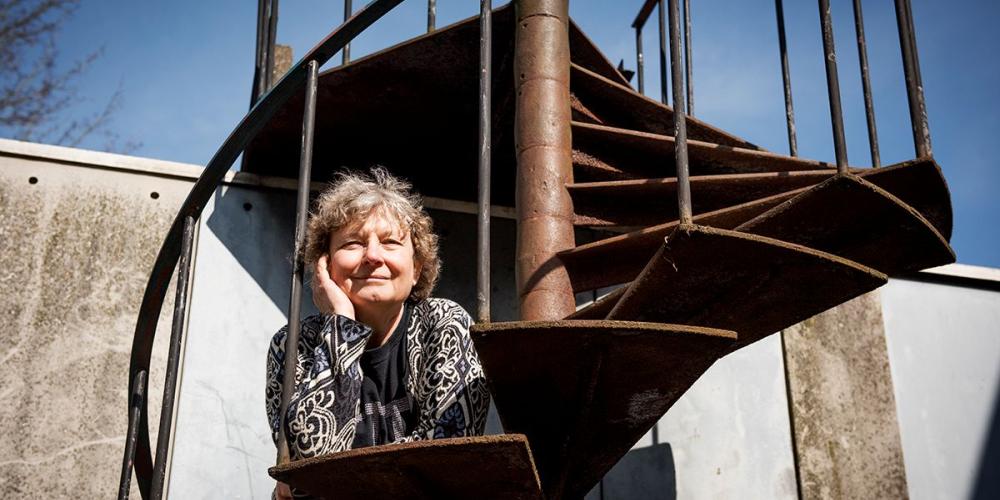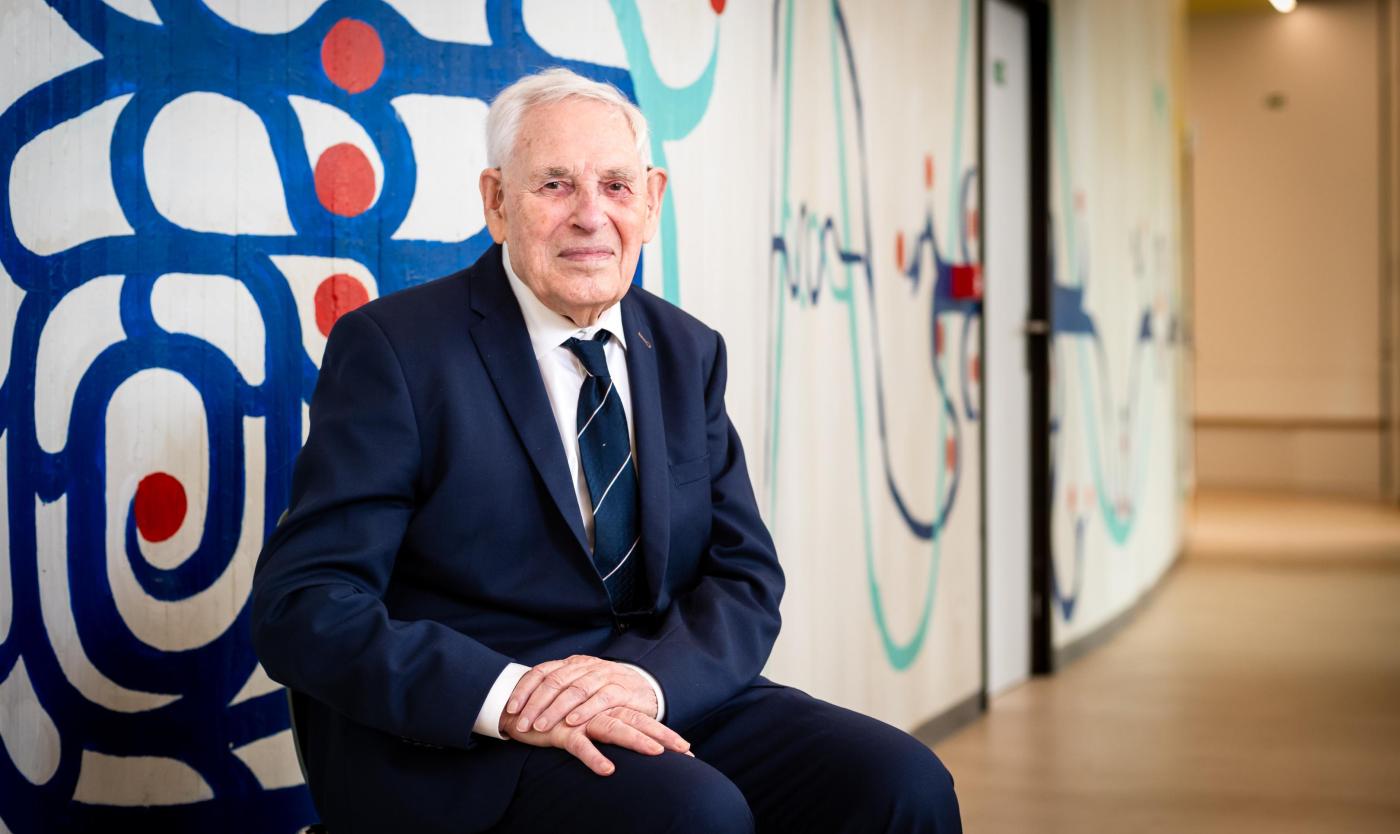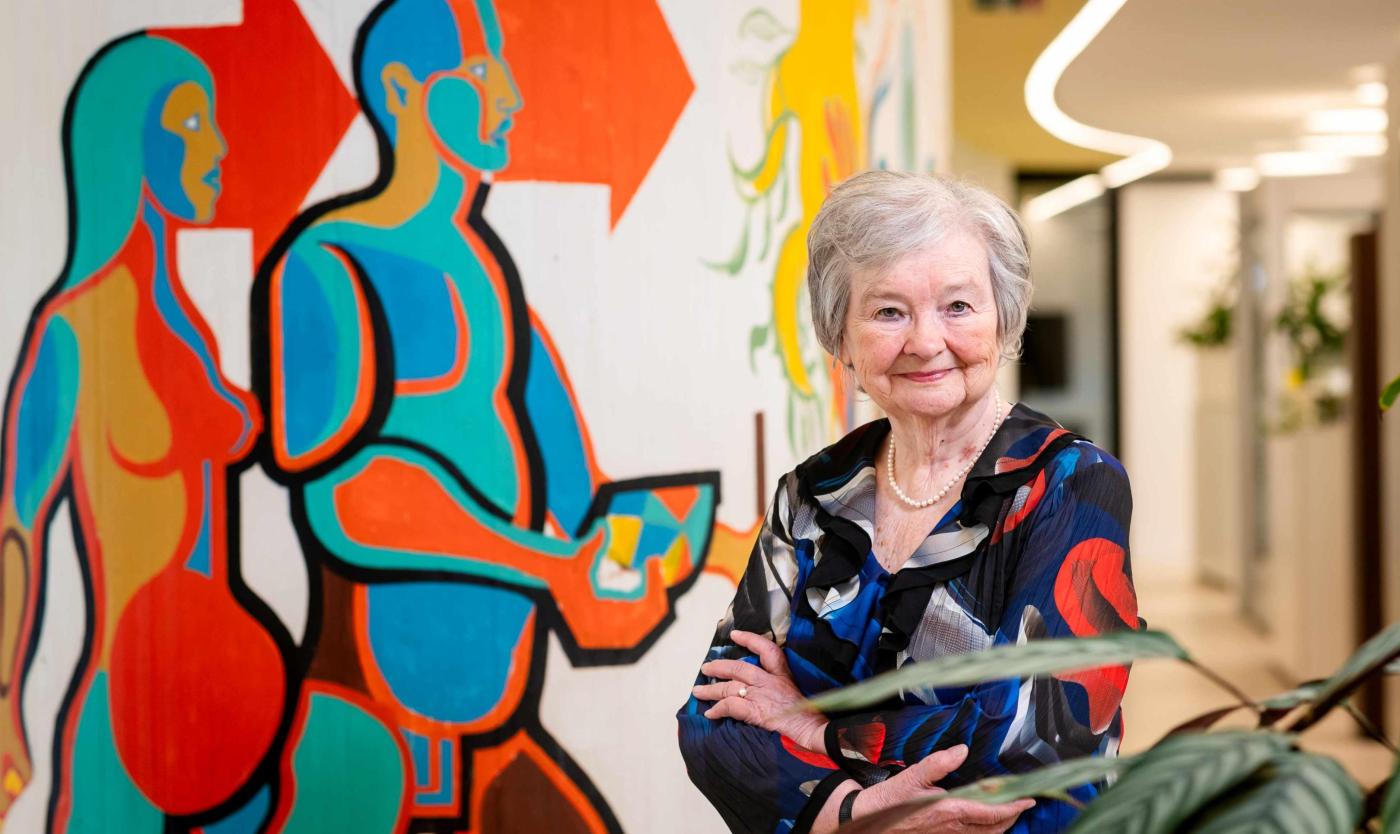
The career of leading physicist Ingrid Daubechies (b. 1954) unfolded largely in the United States. At just 33, she achieved global recognition for discovering the formulas for different types of wavelets – a breakthrough that made it possible to compress images without loss of quality. Later, she became the first female professor of mathematics at the prestigious Princeton University. Today, she is Professor Emerita at Duke University. Earlier this year, she was awarded the National Medal of Science, America’s highest scientific honour. Yet Daubechies has never lost touch with the VUB, where she studied and began her career – whether through guest lectures or as the driving force behind the maths competition Wiskunnend Wiske.
What first drew you to mathematics and physics?
“For as long as I can remember, I’ve been fascinated by how things work. How can you, for example, deduce from starlight which elements are present? Those were the kinds of things I wanted to understand, even as a child. Originally, I thought about studying engineering – my father was an engineer – but in my final year of secondary school, I realised that understanding how things worked mattered more to me than building them. That led me to physics. My mother wasn’t pleased with that choice. She saw engineering as a real profession, whereas to her, physics – within the sciences – seemed closer to something artistic. She thought I’d never be able to make a living out of it. But I stuck to my decision. Ironically, in the end, I wasn’t just concerned with how things work – I also developed mathematical techniques to help us understand problems more deeply. And throughout my career, I’ve collaborated extensively with engineers.”
"Science may often be about understanding nature or building technology, but ultimately science is a human activity that stems from human curiosity"
“That initial drive is still with me. I love hearing from people who have really got to the bottom of a problem, who can explain exactly how things fit together. And if something is still unknown, I like to help unravel it. I remain curious – though I’m well aware that I have more questions than I’ll ever be able to answer in one lifetime.”
Who or what gave your career its decisive turn?
“Other people. Science may be about understanding nature or building technology, but at its heart, it’s a human activity, born of human curiosity. The satisfaction I’ve found in science hasn’t come only from the content I worked on, but also from the community I’ve worked with – colleagues with whom I truly connected and who shared my passion. Collaboration has also changed enormously over time. When I started, I exchanged letters with colleagues abroad. Today, we can share information online instantly, bouncing ideas back and forth. It’s astonishing how much more can be achieved that way.”
What was the hardest period in your career, and how did you overcome it?
“At the beginning of my career, it seemed for a while that I might have to give up science altogether. It was extremely difficult to secure a permanent research position. And I understood why: society cannot afford to pay a large number of people to do long-term research without clear outcomes. At one point, I genuinely thought I was entering my final six months – both at VUB and in science. With no expectations for the future, I threw myself into organising The Spiral of Life exhibition in 1984, marking the 25th anniversary of the first Dutch-language science courses at what later became VUB’s Faculty of Science. Through that work, many people at VUB got to know me. They told the rector at the time: ‘Have you seen that young woman? Have you seen how much energy she has?’ Thanks to that, I eventually secured an FWO appointment. It was also during that period that I realised I loved coming up with ideas, being creative – especially together with others. In the end, I didn’t have to leave research, but I discovered that I could have found that same fulfilment elsewhere, as long as I could lead a creative life.”

"I am concerned about the future of science in the US"
Where do you see your field heading? What are the main challenges?
“One of the big challenges is to better understand why AI often works so well. If we can really grasp that, we could use AI in much more targeted ways, and with far less energy consumption. But that’s a task for younger generations. I’m curious about the answers, but I won’t be taking on that challenge myself – it’s research on a timescale longer than the years I still expect to have. I don’t mind leaving that to others. I’m at peace with the fact that our time is finite, and that most of mine lies behind me. I’m not done talking, but I no longer need to be at the centre of the action. What matters now are the people around me: spending time with them, taking a few more trips with my husband, and enjoying my children and grandchildren. I do, however, worry about the future of science in the US. My university is shrinking, as are all universities. In mathematics, there may soon be no individual research grants at all – only for certain centres, and even those will be fewer. The whole landscape is shifting. Normally, I’m an optimist, but this could, in the long run, erode the US’s leading position in science. For myself, I regret what’s happening, but the work I’ve done is done – it won’t disappear. I still feel a deep loyalty to the institutions I’ve worked for, and I remain attached to Duke University. With so much being cut, I want to contribute in the field of outreach – keeping scientific networks alive that I consider important, but which the current US administration no longer wishes to support.”
What advice would you give to young researchers?
“To some of my students, I’ve said it quite literally: ‘Don’t try to build a career here anymore. Go to Europe or China.’ At the moment, there are more opportunities there, where young researchers can more easily find a job or a fellowship. To European institutions, I give a different message: don’t focus on attracting the big names from the US – they’ve already had their impact. Instead, prioritise the younger generation. Encourage professors to send their best students, and help those students build careers. That will pay off in the long term. Even if US science policy were to reverse course, some of those researchers would stay in Europe out of loyalty to their employers, or simply because they’ve built their lives there. Europe really must step up its efforts in this regard – because I think China is already doing so, far more strategically.”
About the new science awards
In 2025, VUB launched a new research awards policy in collaboration with the Scientific Support Fund. In addition to the existing Roger Van Geen Prize for exceptional scientific careers and the Ignace Vanderschueren Prize for doctoral research, both already awarded by the Vice-Rectorate for Research, seven new prizes have been created, named after pioneering figures from VUB’s history. With this policy, the university aims to recognise outstanding scientific work at every stage of an academic career.
An overview
- Hilde Bruers Award – Life Sciences (young researchers, max. 10 years of seniority)
- Paul De Vroede Award – Human Sciences (young researchers, max. 10 years of seniority)
- Ingrid Daubechies Award – Basic, Natural and Applied Sciences and Bioengineering Sciences (young researchers, max. 10 years of seniority)
- Franz Bingen Award – Basic, Natural and Applied Sciences and Bioengineering Sciences (mid-career researchers, 10–25 years of seniority)
- Liebaers–Van Steirteghem Award – Life Sciences (mid-career researchers, 10–25 years of seniority)
- Els Witte Award – Human Sciences (mid-career researchers, 10–25 years of seniority)
- Sylvain Loccufier Award – career award for researchers who combine scientific excellence with social impact in the spirit of the values of the VUB
Procedure
The Roger Van Geen, Hilde Bruers, Liebaert–Van Steirteghem, Franz Bingen and Sylvain Locufier Prizes will be awarded biennially from 2026 onwards. The Ignace Vanderscheuren, Paul De Vroede, Els Witte and Ingrid Daubechies Prizes will follow the same rhythm from 2027. The call for nominations is issued in September, with 15 December as the submission deadline. Files are evaluated by the Bureau of the Research Council or by an ad hoc committee (for the Sylvain Loccufier Prize). The Scientific Support Fund makes its final decision by 30 March, and the award ceremony takes place before 30 May.
The prize money is €5,000 for young researchers and €10,000 for mid-career researchers, in each case in the form of a working credit. The Sylvain Loccufier Prize does not involve a cash prize, but a work of art.
View the Vice-Chancellor's call for 2025(through WeAreStaff)
*For medical reasons, it was not possible to interview Prof. Emeritus Franz Bingen in time for this series.




